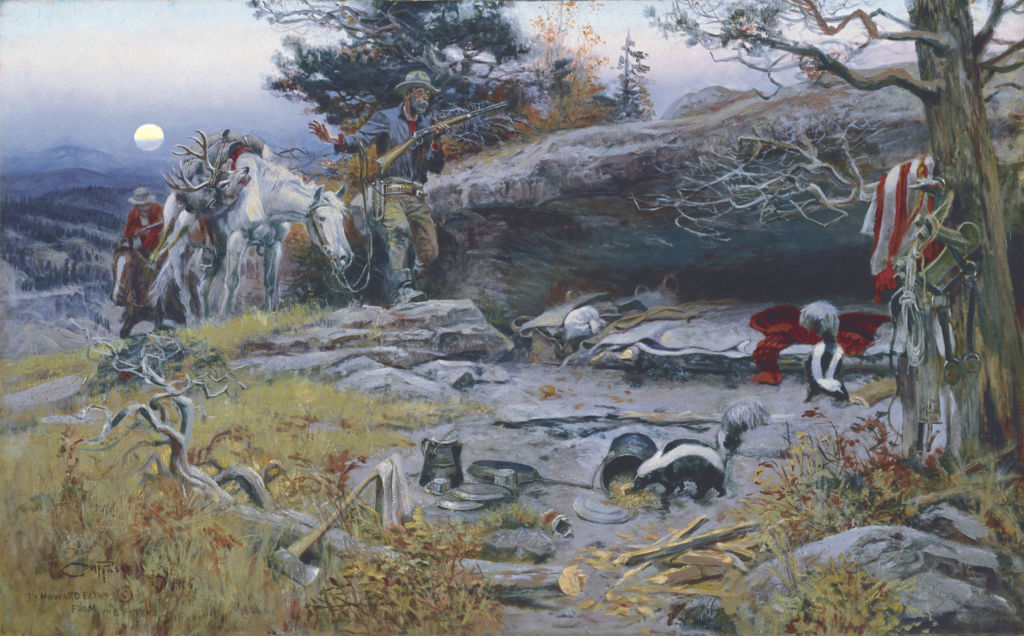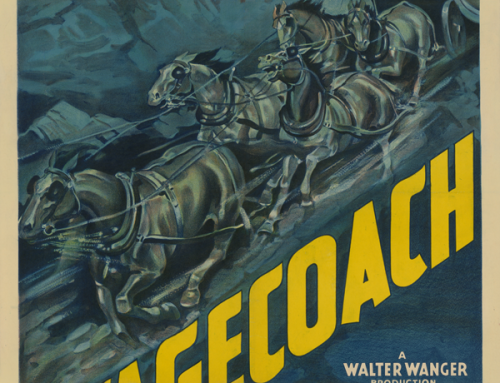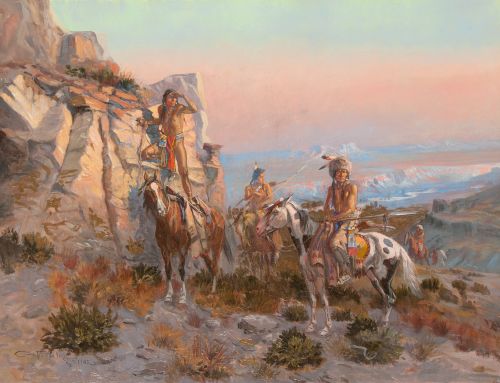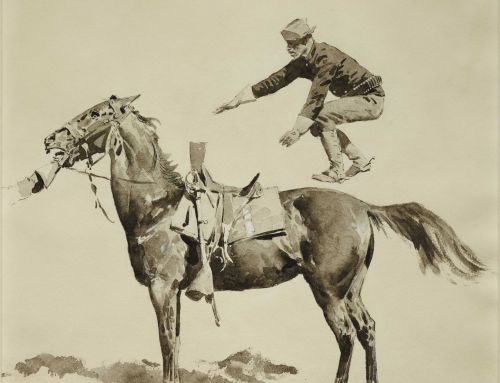It’s summer time, which for some also means vacation time. For those who are looking to escape to the great outdoors, camping is a fun way to enjoy “ma nature.” Charles Russell enjoyed being outdoors and went on several camping trips, including a few with friend and pioneer dude rancher, Howard Eaton. After one such trip, Charlie’s wife Nancy recounted to a friend, “This trip has been a trip of memories. Chas. just loved it all and had such a good time every day then around the camp fires at night they always had the big talk.” Russell gifted to Eaton his painting, Man’s Weapons Are Useless When Nature Goes Armed, in gratitude for such a memorable excursion along the Grand Canyon in October 1916.

Charles Russell, Man’s Weapons Are Useless When Nature Goes Armed, 1916, Oil on canvas, 30 inches x 48 1/8 inches
This painting is a great example of Russell’s sense of humor. Here, the two hunters return to a campsite left in an absolute mess. One of our SRM docents was a Scoutmaster for Boy Scouts of America for several years, and he interprets this artwork as a scene of what NOT to do when camping, including:
- Never leave food out in your campsite. You have to store food in safe, strong, closeable containers, and if you’re in a bear area, it has to be suspended waaaaayyy out of reach. Never, ever eat in your tent. Not following these rules invites critters, big & small, into your campsite (or tent) – ants, raccoons, skunks, bears, etc.
- Always clean up right after eating; wash all used pots, pans, & utensils. You’re going to need them clean next time, anyway, and if you don’t clean up food, well… see #1.
- Cutting tools (axes, knives, saws, etc.) must be sheathed when not in use. Leaving them lying around a campsite invites severe injury, especially at night. Since the hunters in the painting would have been leaving their campsite in the moonlight, the unsheathed axe would have been very hazardous. It’s also interesting that Russell painted the axe head in such a way that its gleaming sharp edge looks unusually bright & shiny, as if to say, “Look at me, look at me!!”
- Cutting tools should never be left in a precarious, dangerous position. The axe, in addition to being unsheathed, is placed in a way that if someone were stumbling around in the night, and stepped or fell on the handle, the axe could have been catapulted up and caused serious injury.
- Axes should only be used in a well designated area, usually a 15′ to 20′ diameter circle, away from the campsite, which has been cleared of debris and is well marked by a rope or rock ring. This would be more explicitly marked in a Scout camp than in a hunter’s campsite, but anyone using an axe should always make sure that there is no one & nothing within axe-swinging range that could be hurt or damaged accidentally should anything slip or fly off.
- Be careful about where you put your sleeping bag or bedroll – or tent. Stay away from low areas or gullies, as they can fill with rainwater. Don’t sleep under or next to anything that can fall (e.g., tree limbs) or next to a cliff-type structure where water or rocks can fall from above. And never, EVER, sleep near anything that looks like an animal den. In the painting, the bedroll was placed under a very snaky looking overhang. To most people, it looks like it could be a safe place, out of the rain, but that also makes it a desirable place for animals, especially snakes.
I suspect other experienced campers could cite other helpful guidelines found in this painting that have not been listed. Let us know in the comments what you notice!






Leave A Comment